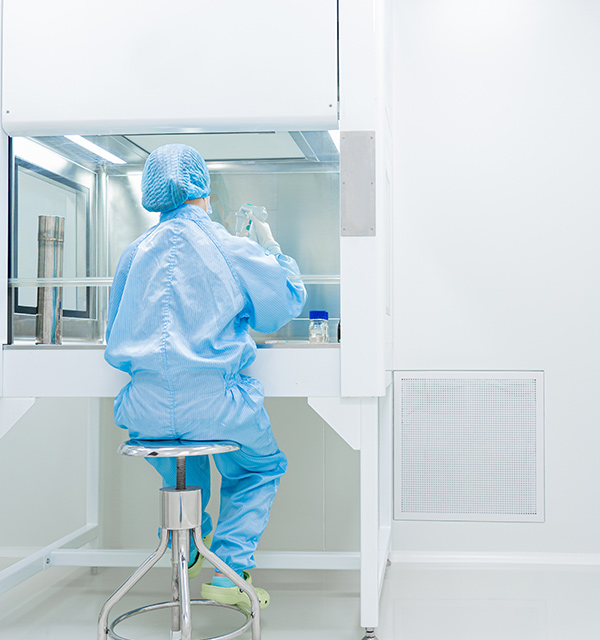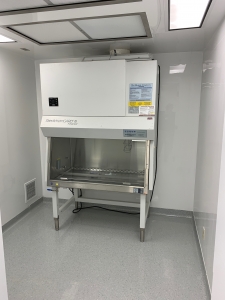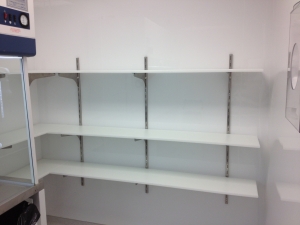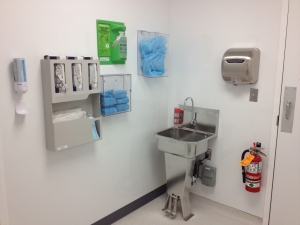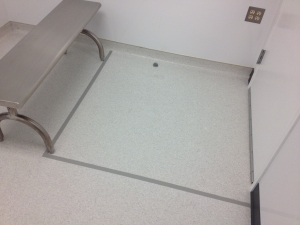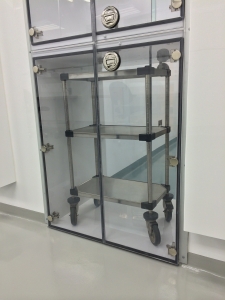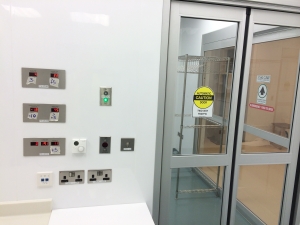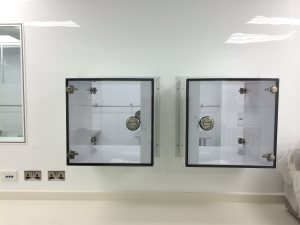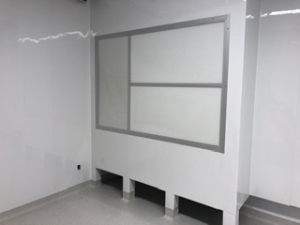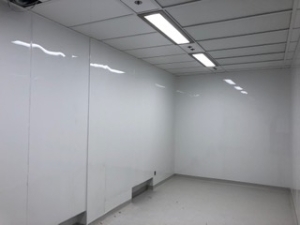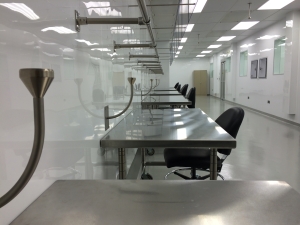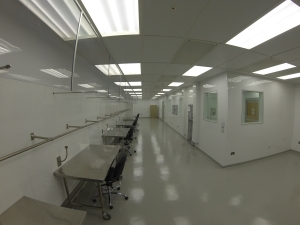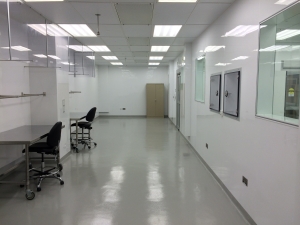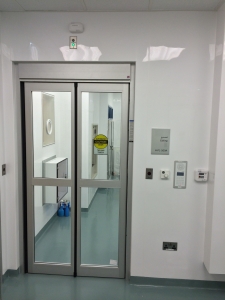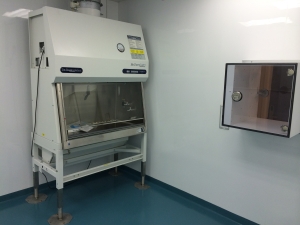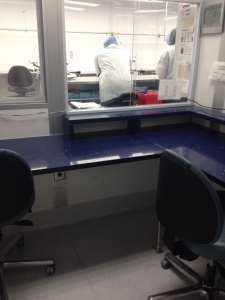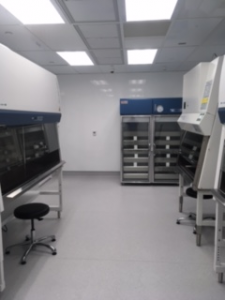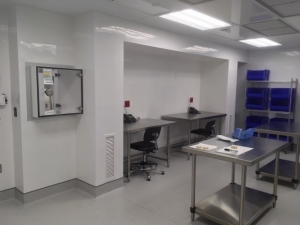Does Your Cleanroom Meet USP797 Standards?
USP 797 establishes sterile compounding standards to protect patients from risks such as contamination, infection, or dosage errors when receiving compounded medications. Developed by the United States Pharmacopeia, these guidelines cover crucial areas, including staff responsibilities, training requirements, facility standards, environmental monitoring, and proper storage protocols for compounded sterile preparations.
The latest updates, effective November 1, 2023, aim to improve patient safety by addressing advancements in science and technology. Key changes include revised procedures, stricter personnel qualifications, and enhanced handling protocols for hazardous drugs.
A USP <797> cleanroom environment must meet stringent standards to ensure sterility and minimize contamination risks. Here's a detailed breakdown:
Air Quality:
- ISO Class 5 air cleanliness for primary engineering controls (e.g., laminar airflow workbenches).
- ISO Class 7 for buffer rooms and ISO Class 8 for ante-rooms that do not share a hazardous cleanroom/ISO Class 7 for a shared.
- HEPA filters to remove 99.97% of airborne particles as small as 0.5 microns.
- Positive air pressure differentials to prevent contamination from adjacent areas.
Environmental Monitoring:
- Regular air and surface sampling for microbial and particulate contamination.
- Continuous monitoring of temperature, humidity, and pressure differentials.
Facility Design:
- Segregated areas for gowning, handwashing, and sterile compounding.
- Smooth, non-porous, and easily cleanable surfaces for walls, floors, and ceilings.
- Proper lighting and temperature control to maintain a comfortable and sterile workspace.
Cleaning and Disinfection:
- Daily cleaning of all surfaces, including floors, counters, and equipment.
- Use of EPA-registered disinfectants and sterile 70% isopropyl alcohol (IPA).
- Sporicidal agents for periodic deep cleaning.
Personnel Practices:
- Strict gowning protocols, including sterile gloves, gowns, masks, and shoe covers.
- Removal of personal items like jewelry, cosmetics, and electronic devices before entering.
- Rigorous hand hygiene procedures.
Airflow and Ventilation:
- Unidirectional airflow in critical areas to minimize turbulence.
- Adequate air changes per hour (ACH) to maintain cleanliness levels.
These elements collectively ensure compliance with USP <797> and safeguard the integrity of compounded sterile preparations. Let us know if you'd like to have your facility assessed!
US797 Cleanroom Pharmacy Renovation or New Construction?
If your facility is renovating an existing space or constructing a new pharmacy, Cleanetics offers comprehensive expertise to bring your cleanroom project to life. We specialize in the design phase, ensuring your cleanroom meets specifications for air changes, temperature, relative humidity, and particle counts.
With experience collaborating with leading hospitals worldwide, we have developed state-of-the-art USP <797> and USP <800> cleanrooms that adhere to all regulations and pass state inspections seamlessly. One highlight of our work includes a turn-key design-build project for a 2,000 sq/ft USP <797> and <800> hospital pharmacy. Cleanetics is your all-in-one provider for cleanroom design, construction, installation, and certification, ensuring your facility operates confidently and remains fully compliant with all applicable regulations.
I have been using Cleanetics for a few years now and I would highly recommend their services. Deric and his team are very reliable and knowledgeable and are always available whenever I have a question. I have worked with other companies in the past but none have been as responsive as Cleanetics. As they always tell me "It's my job to care for the patients and their job to take care of the cleanroom.
-Salvatore R., New Jersey Pharmacist
Contact Us for USP 797/800 Cleanroom Solutions
Check out our RxInsider Features
RXinsider | Mastery in Biotech Cleanroom Engineering
RXInsider Pharmacy Platinum Pages
Partner with Cleanetics to Ensure Your USP797 Cleanroom is Compliant.
Cleanetics will assess, advise, and rectify any issues you may be experiencing or maintain the already compliant cleanroom pharmacy.
Building USP797 & USP800 Cleanrooms Since 2003
Since 2003, Cleanetics has been a trusted provider of USP <797> and USP <800> cleanrooms for leading hospitals nationwide. Our journey began by consulting, designing, building, and certifying cleanrooms, collaborating closely with Directors of Pharmacy to craft Sterile Compounding Cleanrooms that meet every need. As regulations continue to evolve, the Cleanetics team ensures clients stay fully compliant by keeping up to date with the latest USP and FDA standards. More than just a construction company, we act as an extension of your team, prioritizing your success every step of the way.
Have questions about the recent USP <797>/<800> regulation updates? These revisions were enforced starting November 2023—let us help ensure your facility is prepared and compliant. Reach out today!
|
Contact Us for USP 797/800 Cleanroom Solutions
Enviromental Monitoring Experts
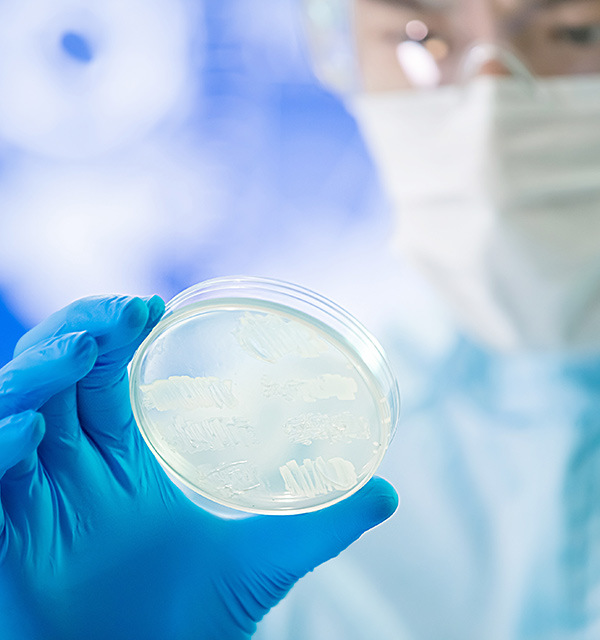
Are you operating a USP <797> cleanroom and need assistance with certification or maintenance? Cleanetics is committed to working around your busy schedule, ensuring your facility remains compliant with State, DOH, and Federal regulations. By partnering with Cleanetics, you receive proactive alerts for certification deadlines and scheduled services to maintain compliance. We take on the responsibility of cleanroom management, so your pharmacy team can focus entirely on patient care and compounded sterile preparations (CSPs). Together, we eliminate the stress of cleanroom compliance.
USP <797> cleanrooms follow ISO 14644-1 classifications for air cleanliness by particle concentration. The following are the ISO particle requirements:
• ISO Class 5: No more than 3,520 particles (0.5 m) per cubic meter of air. This classification applies to critical areas, LAFW's, & BSC's where CSP's occur
• ISO Class 7: No more than 352,000 particles (0.5 m) per cubic meter. This classification applies to buffer areas and anterooms with a shared hazard and non-hazardous cleanroom.
• ISO Class 8: No more than 3,520,000 particles (0.5 m) per cubic meter. This classification applies to anterooms without a shared hazardous and non-hazardous cleanroom.
In addition to non-viable particle limits, USP <797> also requires viable microbial monitoring to ensure sterility in compounding environments. Microbial air and surface limits for a USP <797> pharmacy are critical for sterility and compliance of CSP's. Here are some key guidelines:
USP797 Airborne Microbial Limits:
• ISO Class 5 (Critical Areas): 1 colony-forming unit (CFU) per cubic meter.
• ISO Class 7 (Buffer Areas): 10 CFU per cubic meter.
• ISO Class 8 (Ante Areas): 100 CFU per cubic meter.
USP797 Surface Sampling Limits:
• ISO Class 5 (Critical Surfaces): 3 CFU per contact plate.
• ISO Class 7 (Buffer Areas): 5 CFU per contact plate.
• ISO Class 8 (Ante Areas): 50 CFU per contact plate.
USP <797> microbial guidelines are the backbone of sterile compounding safety. By maintaining strict contamination limits, pharmacies can protect patients from harmful microorganisms while ensuring the integrity of compounded sterile preparations. Regular environmental monitoring, proper gowning, and meticulous aseptic technique all play a role in upholding these standards.
Cleanetics offers a comprehensive approach to environmental monitoring, helping pharmacies stay compliant while focusing on patient care. Maintaining air quality, surface cleanliness, and pressure differentials is crucial for USP <797> and USP <800> cleanroom standards, and having an expert partner can certainly make compliance more manageable.

